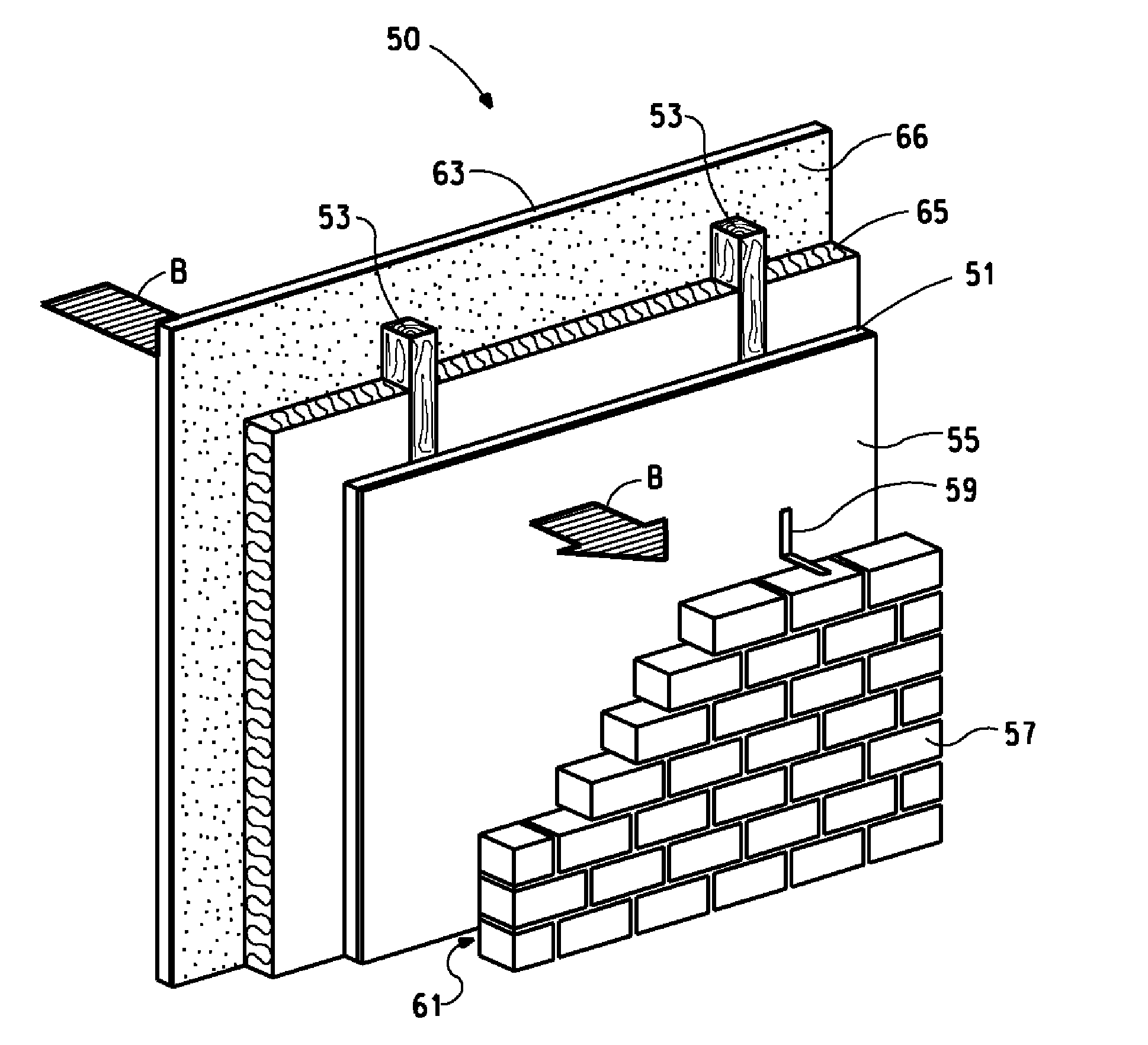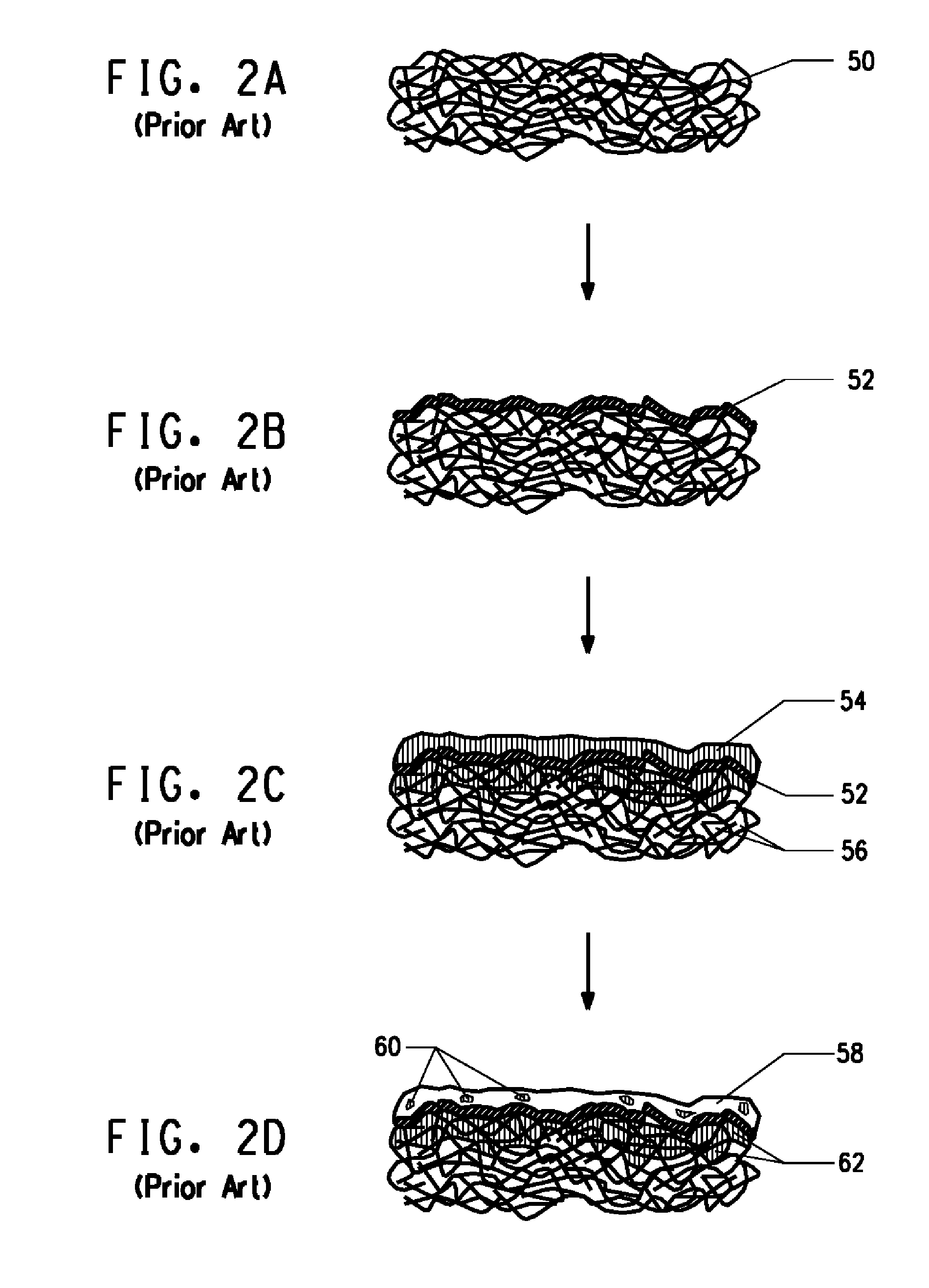Method for producing metalized fibrous composite sheet with olefin coating
a technology of olefin coating and fibrous composite sheet, which is applied in the direction of synthetic resin layered products, nuclear engineering, transportation and packaging, etc., can solve the problems of relatively limited extent of deflection attainable with practical electromagnetic structure, beam radiation, and uv optics are typically more difficult to construct and maintain than their visible counterparts
- Summary
- Abstract
- Description
- Claims
- Application Information
AI Technical Summary
Benefits of technology
Problems solved by technology
Method used
Image
Examples
examples 1-3
[0121]The efficacy of ozone (O3) for promoting acrylate conversion was tested using propoxylated neopentyl glycol diacrylate (available commercially under the trade name SR9003 from Sartomer Company, Inc., Exton, Pa.).
[0122]For each example, eight samples of the SR9003 precursor having a mass of about 25 mg each and a bulk thickness of about 225 μm were charged into small aluminum pans. Each sample was doped with dimethyl suberate (5% by weight). These pans were transferred to a sealed quartz enclosure, which was maintained at room temperature with a low through flow (0.2 ml / min) of dry laboratory air.
[0123]Then the dry air flow entering the quartz enclosure was charged with ozone from an ozone generator (CD10 Corona Discharge System manufactured by ClearWater Tech, San Luis Obispo, Calif.). The generator was operated at three different preselected input power levels, i.e. at 100% of its rated capacity (Example 1), at 50% (Example 2), and at 10% (Example 3), to provide different lev...
example 4
[0126]The efficacy of ozone (O3) for promoting conversion of an acrylate coated onto a TYVEK® 1560B plexifilamentary sheet prepared with a 65 nm thick aluminum metallization layer was tested.
[0127]SR9003 precursor (propoxylated neopentyl glycol diacrylate as a 13% solution by weight in diethyl ether) was manually coated on 5 cm-square samples of the metallized, plexifilamentary sheet substrate. A suitable small amount of the acrylate was put on a surface of the substrate and dispersed uniformly using a metal coating rod. The rod had a diameter of about 1 cm and its surface was covered with a helical, closely spaced wrapping of 0.3 mm diameter wire. After the ether evaporated, the samples had a 1.0 g / m2 acrylate coating, corresponding to a thickness of approximately 1 μm.
[0128]The samples were then exposed to ozone using a protocol similar to that employed for Examples 1-3. The samples were placed in to the same room-temperature, sealed quartz enclosure, with a low flow (0.2 ml / min) ...
example 5
[0132]The experiment of Example 4 was repeated with fresh substrate material, producing the data set forth in Table III below.
[0133]
TABLE IIIConversion of Coated Monomer after Ozone ExposureExposure TimeExample 5(h)Fraction Converted00.0010.2920.2940.5360.8980.84
[0134]Together, the data of Examples 4 and 5 (Tables II and Ill) show that the kinetics of conversion of an acrylic monomer coating on TYVEK sheet samples are comparable to the kinetics of conversion of the monomer itself, as provided in the data of Examples 1-3 above. Exposure to ozone at room temperature is thus established as efficacious for initiating conversion of an acrylate monomer coated on a metalized fibrous substrate material.
PUM
| Property | Measurement | Unit |
|---|---|---|
| thickness | aaaaa | aaaaa |
| temperature | aaaaa | aaaaa |
| width | aaaaa | aaaaa |
Abstract
Description
Claims
Application Information
 Login to View More
Login to View More - R&D
- Intellectual Property
- Life Sciences
- Materials
- Tech Scout
- Unparalleled Data Quality
- Higher Quality Content
- 60% Fewer Hallucinations
Browse by: Latest US Patents, China's latest patents, Technical Efficacy Thesaurus, Application Domain, Technology Topic, Popular Technical Reports.
© 2025 PatSnap. All rights reserved.Legal|Privacy policy|Modern Slavery Act Transparency Statement|Sitemap|About US| Contact US: help@patsnap.com



